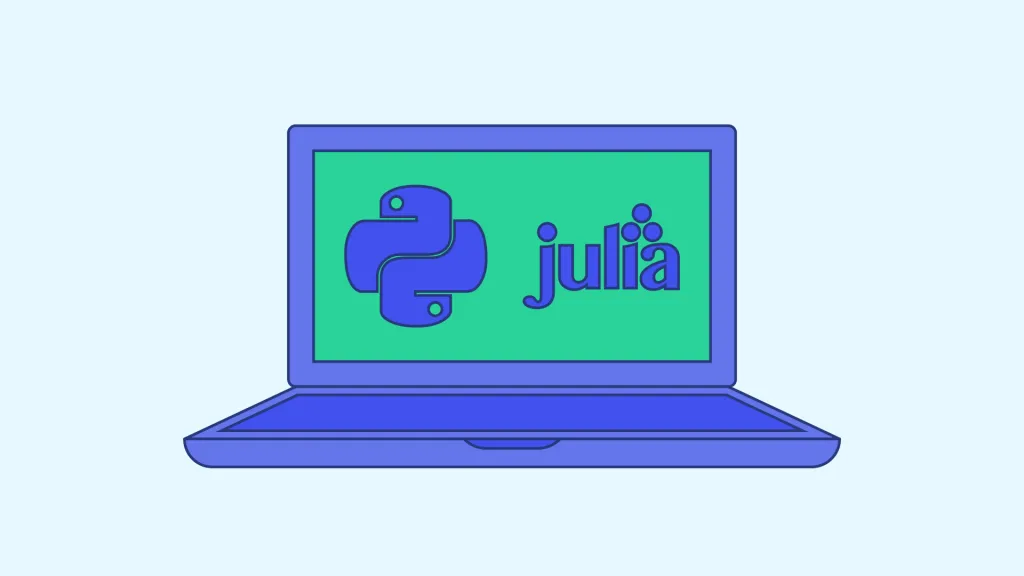Many data scientists hesitate between Python and Julia for their Machine Learning or data science projects. Discover the respective advantages and disadvantages of these two programming languages...
Introduced in the 1990s, Python remains one of the world’s most popular programming languages. The language stands out for its simplicity, and the ease with which it can be learned. Today, more than 7 million coders use it.
Python is used in particular in the fields of data science and machine learning. However, it now has to contend with a new language created in 2012: Julia.
The aim of Julia’s creators was to offer programmers greater efficiency, flexibility and scope. Their goal was to create a language that could be used like Python, while offering the same computational capabilities as Matlab and the speed of C.
Now, for many programmers, it’s hard to choose between Julia and Python for data science. According to the latest 2020 user survey, conducted by Julia developers among 2565 users, Python is the language that the vast majority (76%) of Julia aficionados will choose as their second choice.
Each of these languages has its advantages and disadvantages. To help you make the right choice, here’s a look at their main differences:
What are Julia's strengths and advantages?
Created specifically for Data Science, complex linear algebra, data mining and Machine Learning, Julia aims to address the main weaknesses of Python and other programming languages used in these fields.
This relatively new language offers interactivity via its REPL (Read Eval Print Loop) command line to help programmers easily add commands and scripts.
It uses the LLVM framework for just-in-time (JIT) compilation, enabling it to offer the same runtime speed as C. What’s more, Julia is compatible with a wide variety of external Python, Fortran and C libraries. Its syntax is simple and efficient, like that of Python. What’s more, it features a comprehensive debugging tool that lets you run code in a local REPL to check variables and results, and add breakpoints.
Its multiple dispatches allow functions to be extended, while polymorphic dispatch lets developers apply function definitions as properties of a structure.
Thanks to metaprogramming support, programs written in Julia can also generate other Julia applications and change their own code. These are the main features of this language.
Compared with Python, Julia offers several advantages.
Firstly, its syntax is optimized for mathematics and scientific languages or environments such as R, Octave, Matlab and Mathematica. Its syntax is similar to the formulas used by mathematicians, so they can learn to master it more easily.
Type declarations and JIT compilation enable Julia to outperform Python in terms of speed. Another advantage is automatic memory management.
Given that Julia was created for Machine Learning and statistics, it’s a better choice than Python for linear algebra. Finally, its native Machine Learning libraries are a real asset for use in machine learning.
What are the advantages of Python?
Nevertheless, Python also offers advantages for data science. Although slower, its runtime is lighter and Python programs generally take less time to start running.
Even in terms of speed, Python improves over time. Its interpreter has improved, particularly with regard to parallel and multi-core processing. This has enabled it to gain in speed.
Another advantage of this well-known language is its popularity. In terms of size, the Julia community is still a long way from matching that of Python, although it is growing steadily.
Similarly, Python benefits from a wider variety of third-party packages, such as PyTorch and Tensorflow for Machine Learning, while very little third-party software is currently being developed around Julia.
In conclusion, Julia is a language created specifically for Data Science and Machine Learning, and this allows it to outperform Python in terms of speed and ease of use for these disciplines. Nevertheless, Python remains an excellent choice, with a vast community of users contributing to its constant improvement. To choose between the two, you’ll need to analyze your specific needs and preferences in terms of the strengths and weaknesses of each…










